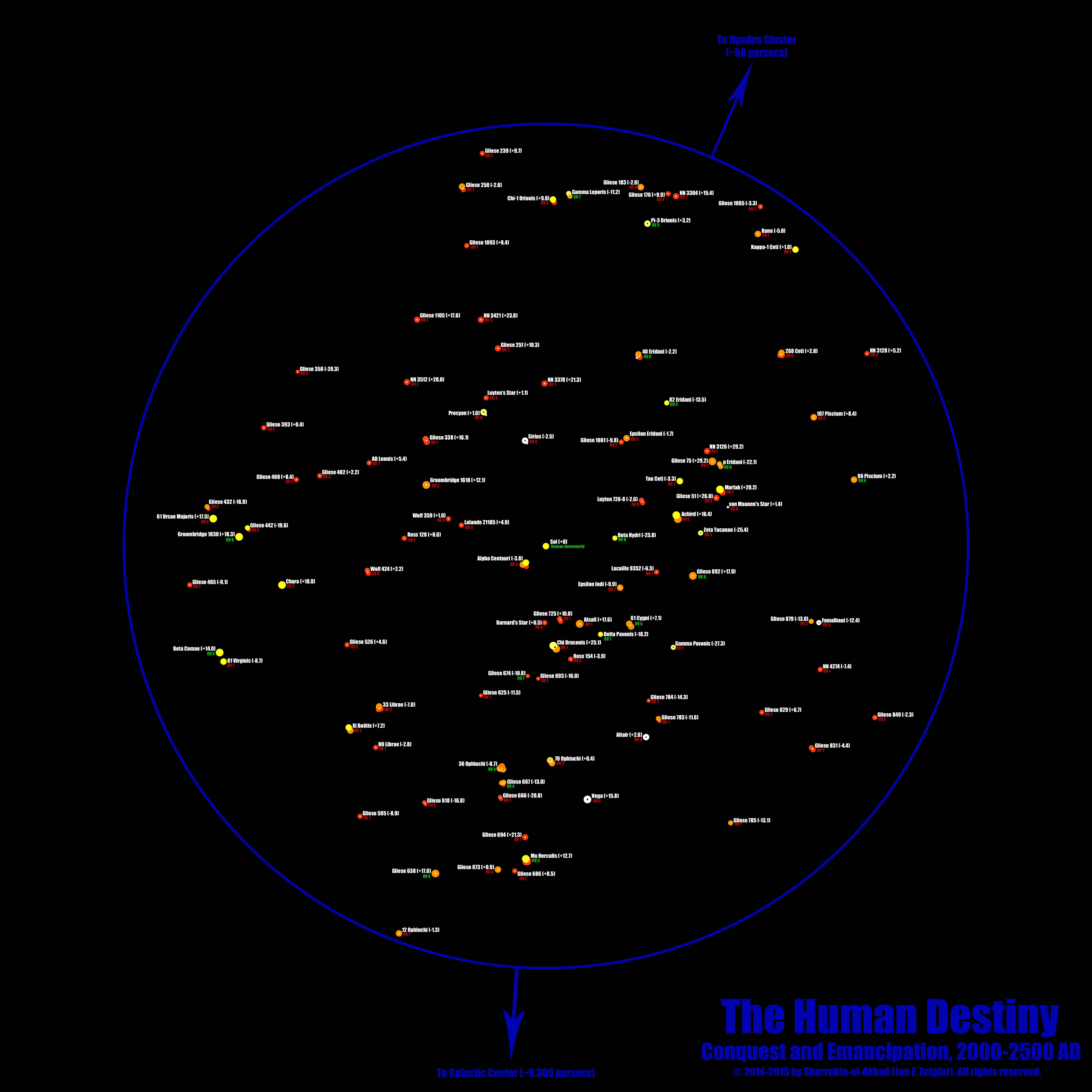HOME | DD
 Sharrukin-of-Akkad — Human Destiny Map (Version 3.0)
Sharrukin-of-Akkad — Human Destiny Map (Version 3.0)

#starmap #thehumandestiny #sciencefiction #spaceopera
Published: 2018-08-26 02:40:19 +0000 UTC; Views: 3563; Favourites: 25; Downloads: 28
Redirect to original
Description
Four years later, and after a great deal of new world-building work, here's a considerably revised and updated version of the reference map for my original fiction project, The Human Destiny.This is a setting in which Earth is conquered by an alien interstellar empire (the Khedai Hegemony) sometime in the middle of the 21st century, and in which humans live in a client-state protectorate for several centuries afterward. Eventually the Hegemony begins to permit humans to enter its interstellar service, and to explore and colonize a number of worlds near Sol. The stories I'm writing largely fit into this period, when a few exceptional humans begin to prove themselves on the galactic stage. The first story has been published and is available here on Amazon . More stories are on the way, including at least a few novels if I can get those put together.
The map displays space within 10 parsecs (about 32.6 light-years) of Sol. The placement of stars is based on the HIPPARCOS catalog, and is as accurate as current knowledge can make it.
In many cases we've already discovered the existence of one or more exoplanets circling the stars in question. I've applied a planetary-system design sequence of my own invention to fill in the blanks, determining where (more or less) Earth-like worlds exist. This sequence is loosely based on the system I wrote for the RPG sourcebook GURPS Space, Fourth Edition about a decade ago, but considerably updated to match the current state of astrophysical knowledge. That design sequence will probably be published at some point as well.
Every star we know about of spectral class K and above is marked on the map. I've also marked some M-class "red dwarf" stars, those few which I've determined to have their own habitable worlds. Most red dwarf stars have not been placed on the map, otherwise it would be so thick with red dots and attached labels as to be unreadable.
The scale is in light-years (and this time, I've been smart enough to place a scale on the map image itself). Each star system is marked by name, with its Z-coordinate given to the nearest tenth of a light-year. Those star systems which have one or more habitable worlds also have those marked by name in green. Two star systems have extensive human colonies despite not having any habitable world in them - those are marked by name in blue.
Astute observers may notice that many of the stars on this map seem to be in the "wrong place," especially if they're familiar with similar maps from science-fiction tabletop or computer games. For this version of the map, I used a galactic coordinate system, rather than the equatorial coordinates most often used for such projects. This gives me a set of more meaningful cardinal points: coreward and rimward determined by the direction of the galactic center, and spinward and trailing by the direction of galactic rotation in our neighborhood.
Very large image (8000 pixels on a side). For best results, download or zoom in by clicking on the image above twice.
Technical notes: Image was produced entirely in Photoshop, with no external resources. Research and planetary system design took up about 50-60 hours over the last few weeks. Actual map design and production took about 10-12 hours.
© 2014-2018 by Sharrukin-of-Akkad (Jon F. Zeigler). All rights reserved. You may not copy, alter, or repost this work without my express written permission, nor may you in any other way treat this work as your own.




















